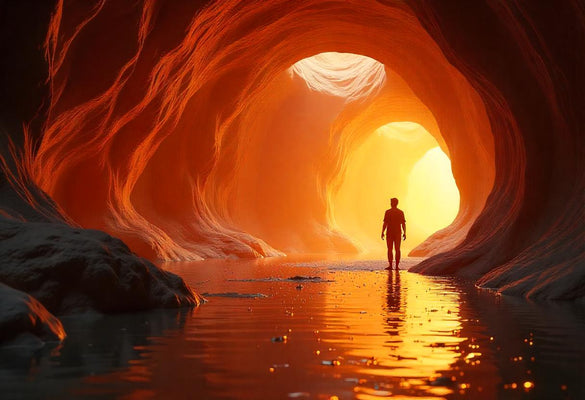Virtual Caves for Film Production Benefits: Transforming Modern Cinema

The film industry stands at a pivotal moment where traditional filmmaking methods meet revolutionary technology. Virtual caves for film production represent the most significant advancement in cinematic creation since the introduction of digital cameras. These sophisticated systems transform how directors, cinematographers, and production teams approach storytelling, offering unprecedented creative freedom while dramatically reducing production costs and timelines.
Modern film studios worldwide are rapidly adopting virtual cave systems to create immersive environments that were previously impossible or prohibitively expensive to achieve. These cutting-edge facilities allow filmmakers to step directly into their digital worlds, making real-time creative decisions that enhance both the artistic vision and production efficiency.
Understanding Virtual Cave Technology in Film Production
Virtual caves for film production create room-sized digital environments where every surface becomes a projection screen displaying ultra-high-resolution imagery. Unlike traditional green screen setups or standard VR applications, these systems generate shared spaces where entire production teams can collaborate simultaneously within the same virtual environment.
The technology operates through synchronized projection systems that create seamless 360-degree imagery across walls, floors, and ceilings. Advanced motion-tracking sensors monitor every movement within the space, instantly adjusting perspectives and lighting to maintain perfect visual alignment. This creates an environment so realistic that actors can deliver more authentic performances while directors can visualize complex scenes with complete accuracy.
Immersive film technology has evolved beyond simple visualization tools to become integral components of modern film production workflows. These systems integrate seamlessly with existing film equipment, allowing traditional cameras, lighting rigs, and audio equipment to function naturally within virtual environments.

Revolutionary Benefits for Film Production Teams
Enhanced Pre-Production Planning and Visualization
Virtual cave systems transform the pre-production phase by allowing directors to walk through their scenes before filming begins. This capability eliminates guesswork and reduces costly mistakes during principal photography. Directors can test camera angles, lighting setups, and actor blocking within accurate virtual representations of their sets.
Production designers benefit enormously from the ability to build and modify sets instantly. Rather than constructing physical mockups or relying on 2D drawings, designers can create full-scale virtual environments that stakeholders can physically experience. This leads to better design decisions and faster approval processes.
Cost Reduction and Production Efficiency
CAVE film production systems deliver substantial cost savings across multiple production phases. Traditional set construction for complex environments can cost millions of dollars and require weeks or months to complete. Virtual caves allow production teams to create and modify elaborate sets in days rather than months, with costs that are typically 60-80% lower than physical construction.
Location shooting expenses become dramatically reduced as virtual caves can recreate any environment imaginable. Productions no longer need to transport large crews to remote or expensive locations, eliminating travel costs, accommodation expenses, and location fees. Weather delays and seasonal restrictions become irrelevant when filming within controlled virtual environments.
Real-Time Creative Collaboration
The collaborative nature of virtual cave technology transforms how creative teams work together. Directors, cinematographers, production designers, and key actors can simultaneously experience and discuss scenes within the virtual environment. This shared experience leads to better communication, faster decision-making, and more cohesive creative vision across all departments.
Virtual environment filming enables real-time adjustments to lighting, set design, and even weather conditions. If a director wants to see how a scene looks during a thunderstorm versus bright sunlight, the change can be implemented instantly rather than waiting for weather conditions or constructing additional sets.
Advanced Actor Performance and Direction
Actors working within virtual cave environments deliver more natural and engaging performances because they can see and interact with their virtual surroundings in real-time. Rather than acting against green screens and imagining their environment, performers can respond to actual visual stimuli, leading to more authentic emotional responses and physical interactions.
Directors can provide more precise direction because they share the same visual experience as their actors. This eliminates the common problem of miscommunication between directors working with traditional green screen setups where only the director can see the final composite imagery.
Technical Advantages of Virtual Cave Systems
Superior Image Quality and Resolution
Modern virtual cave systems deliver 4K and 8K resolution imagery across multiple projection surfaces, creating visual fidelity that rivals physical sets. The image quality is so high that close-up shots and detailed cinematography work seamlessly within virtual environments, eliminating the need for extensive post-production cleanup or enhancement.
Immersive set design capabilities include realistic lighting simulation that responds to virtual and physical light sources. This means cinematographers can use traditional lighting techniques within virtual environments, maintaining familiar workflows while gaining access to impossible lighting scenarios.
Flexible Environment Customization
Virtual caves provide unlimited creative possibilities for set design and environmental storytelling. Production teams can create environments that defy physical laws, combine elements from multiple locations, or design completely fantastical worlds with perfect photorealistic detail.
The flexibility extends to rapid scene changes and multiple location shooting within single production days. A single virtual cave can transform from an alien planet to a historical palace to a modern cityscape within minutes, maximizing shooting efficiency and creative options.
Integration with Traditional Film Equipment
Advanced filmmaking technology ensures that virtual cave systems work seamlessly with existing film production equipment. Professional cameras, lenses, and lighting equipment function normally within virtual environments, allowing cinematographers to maintain their preferred tools and techniques.
The systems support traditional film workflows including multi-camera setups, crane and dolly movements, and complex lighting rigs. This compatibility means production teams can adopt virtual cave technology without abandoning their existing expertise and equipment investments.

Industry Impact and Adoption
Major Studio Implementation
Leading film studios worldwide have begun integrating virtual cave technology into their production facilities. These installations represent significant investments in the future of filmmaking, with studios reporting improved production schedules, reduced costs, and enhanced creative capabilities.
The technology has proven particularly valuable for large-budget productions requiring extensive visual effects work. By capturing performances within virtual environments, studios can reduce post-production timelines and costs while improving the integration between live-action and digital elements.
Independent Film Production Opportunities
Virtual cave technology is democratizing high-quality film production by making previously impossible scenes accessible to independent filmmakers. Smaller production companies can now create visually stunning films that compete with major studio productions without requiring enormous budgets or extensive location shooting.
This accessibility is transforming the independent film landscape, allowing creative storytellers to focus on narrative and performance rather than being limited by budget constraints or technical limitations.
Future Developments and Innovations
Emerging Technologies Integration
The next generation of virtual cave systems will integrate artificial intelligence, machine learning, and advanced haptic feedback technologies. These developments will create even more realistic and responsive virtual environments while simplifying the technical complexity of system operation.
Real-time rendering capabilities continue to improve, with future systems expected to deliver photorealistic imagery that is indistinguishable from physical environments. This advancement will further blur the lines between virtual and practical filmmaking.
Industry Standardization and Accessibility
As virtual cave technology matures, industry standards are developing to ensure compatibility between different systems and production workflows. This standardization will make the technology more accessible to smaller production companies and independent filmmakers.
Training programs and educational initiatives are expanding to help film professionals develop the skills needed to work effectively with virtual cave systems. Film schools are beginning to incorporate this technology into their curricula, preparing the next generation of filmmakers for virtual production workflows.

Conclusion
Virtual caves for film production represent a fundamental shift in how films are created, offering unprecedented creative freedom while delivering substantial cost and time savings. This technology transforms every aspect of film production, from pre-production planning and actor performances to post-production workflows and final image quality.
The benefits extend far beyond technical improvements, enabling new forms of creative collaboration and storytelling that were previously impossible. As the technology continues to evolve and become more accessible, virtual cave systems will likely become standard equipment in film production facilities worldwide.
For filmmakers, studios, and production companies looking to remain competitive in the rapidly evolving entertainment industry, virtual cave technology offers a clear path forward. The combination of creative possibilities, cost savings, and production efficiency makes this technology essential for modern film production.
Frequently Asked Questions
What exactly are virtual caves in film production?
Virtual caves are room-sized immersive environments where walls, floors, and ceilings display high-resolution 3D imagery through synchronized projection systems. These spaces allow entire film crews to work within virtual sets and locations, replacing traditional green screen setups with shared immersive experiences where everyone can see and interact with the same digital environment.
How much do virtual cave systems cost for film studios?
Virtual cave system costs vary significantly based on size, resolution, and complexity, typically ranging from $500,000 to $5 million for professional film production installations. However, these systems typically pay for themselves within 2-3 major productions through reduced set construction costs, eliminated location fees, and shortened production schedules.
Can virtual caves replace traditional film sets completely?
While virtual caves offer incredible flexibility and cost savings, they work best as complementary technology rather than complete replacements for traditional sets. They excel at creating impossible environments, reducing location shooting, and enabling rapid set changes, but practical sets remain valuable for certain types of intimate scenes and tactile interactions.
What training do film crews need to work with virtual cave technology?
Film crews typically require 1-2 weeks of specialized training to work effectively with virtual cave systems. The learning curve is relatively gentle because the technology integrates with existing film equipment and workflows. Most cinematographers, directors, and technical crew members can adapt their existing skills to virtual environments with proper training and support.
How does virtual cave technology affect actor performances?
Virtual caves generally improve actor performances by providing real-time visual feedback and immersive environments that actors can see and react to naturally. Unlike green screen work where actors must imagine their surroundings, virtual caves allow performers to respond to actual visual stimuli, leading to more authentic and engaging performances.
What are the maintenance requirements for virtual cave systems?
Virtual cave systems require regular maintenance including projector calibration, software updates, and hardware cleaning, typically managed by specialized technical teams. Most professional installations include maintenance contracts and technical support to ensure optimal performance. The systems are designed for heavy production use and generally maintain consistent performance with proper care.




